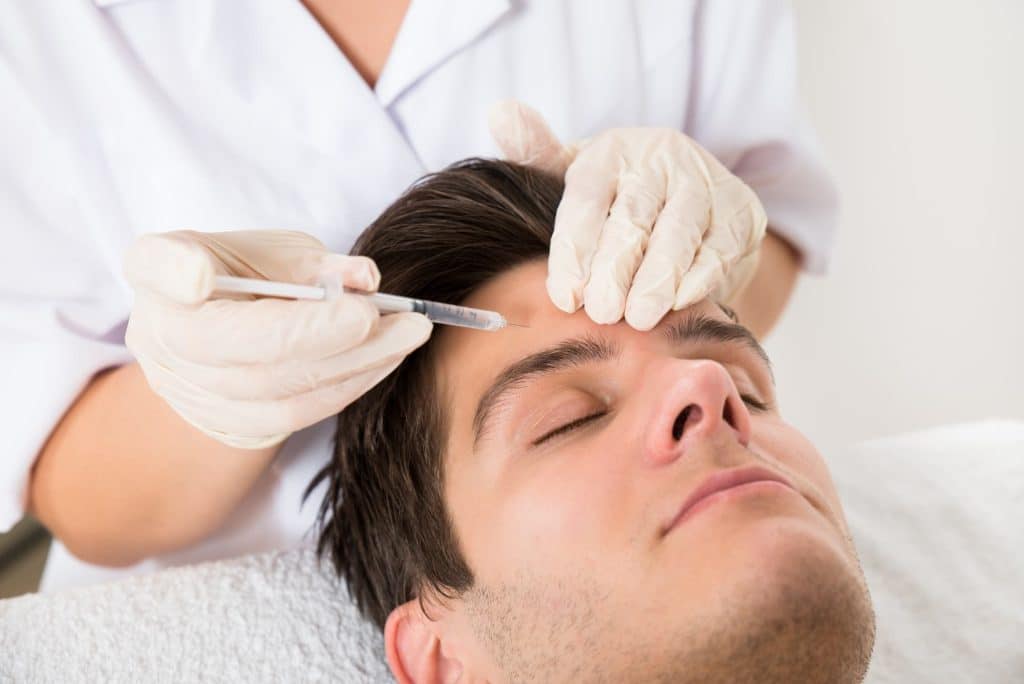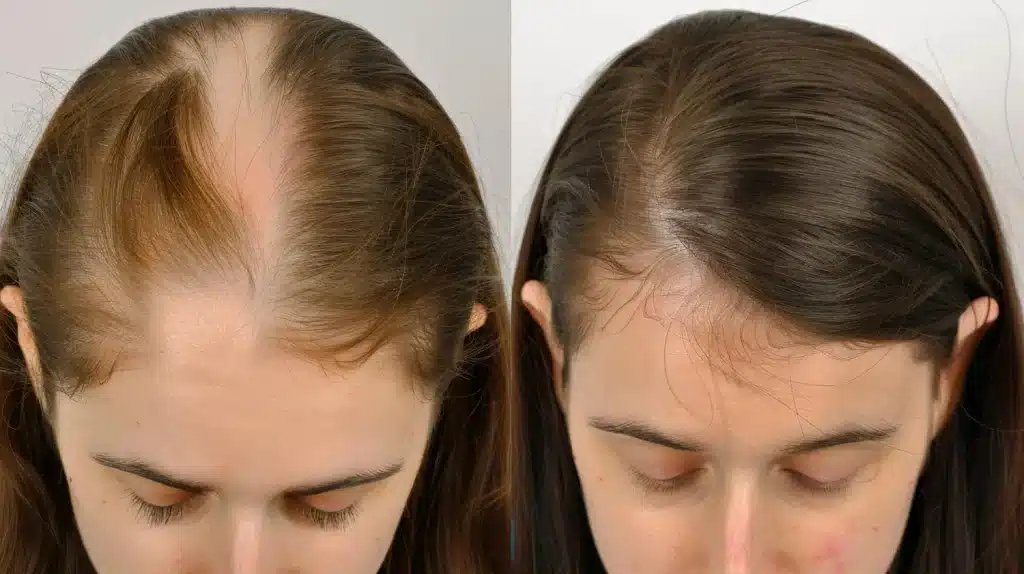There isn’t a cosmetic treatment more famous than Botox. What started as a cure for cross-eyedness soon became the leading facelifting injectable and even a cure for various medical conditions. It has become very trendy to get Botox and “look like a movie star”.
Patients frequently ask how often to get Botox and how often new treatments are necessary. That’s what we’re set to answer today by looking at recent studies and analyzing the results of research into Botox usage. Read on to find out the answer!
How Botox Works
Botulinum Toxin Type A, or Botox as it’s most commonly known is a neurotoxic protein. It is widely used in cosmetic procedures to temporarily reduce the appearance of wrinkles and fine lines. The toxin acts by inhibiting the release of acetylcholine, a neurotransmitter responsible for muscle contractions.
When administered, Botox specifically targets the neuromuscular junction, which is the connection between nerves and muscles. It functions by blocking the release of acetylcholine, which prevents the communication between nerves and muscles. This action leads to temporary muscle paralysis, resulting in the reduction or elimination of wrinkles and fine lines.
The effects of a Botox injection regimen gradually become apparent within a few days to a week after injection. The onset and duration of action can vary depending on several factors, including the patient’s metabolism, dosage, and injection technique. Generally, the effects last for approximately three to six months, after which muscle activity gradually returns, and subsequent treatments may be necessary.
Good Candidates for Botox
A good candidate for Botox treatment typically meets certain criteria. While the final decision should be made on an individual basis and after a thorough consultation between the doctor and the patient, here are some general considerations for identifying suitable candidates.
Botox is primarily used to treat dynamic wrinkles, which are formed by repetitive muscle movements, such as frown lines between the eyebrows, forehead lines, and crow’s feet. Candidates should have visible wrinkles or lines that are accentuated by muscle contractions.
For starters, the patients should be at least 18 years old. Most Botox patients are individuals in their late 20s to early 60s, though how they use Botox is based on their specific concerns. Younger patients may book occasional Botox sessions as a preventive measure to minimize the development of wrinkles, while older patients usually regularly get Botox due to its short-lived but effective rejuvenating effects.
Candidates should be in good overall health, without any major medical conditions that may interfere with the treatment. Conditions such as neuromuscular disorders or certain allergies may impact the suitability of Botox, and a thorough medical history assessment is crucial before proceeding with the procedure.
Some contraindications may prevent individuals from receiving Botox. This includes allergies to the components of the injection, current infections or skin issues at the injection site, pregnancy, and breastfeeding. Additionally, certain medications or treatments may interfere with Botox, and their use should be assessed before proceeding.
Candidates must have realistic expectations regarding the outcome of Botox treatment. They should understand that Botox can temporarily reduce the appearance of wrinkles but will not provide permanent results. Setting appropriate expectations helps ensure patient satisfaction.
Botox Frequency
The optimal frequency of Botox injections is a topic that has been highly discussed in the world of aesthetic medicine in the past several years. It is true that, for the best, most consistent results, patients should repeat their treatments from time to time, but the exact timeframe has always been up for debate.
Botox isn’t a permanent solution for wrinkles, sadly. It wears off over time, usually within three to six months depending on the patient’s metabolism and other factors like the treated area and the amount of product used.
When talking about how often to get Botox, common sense indicates that we should be repeating our treatments the moment we see the effects wear off. But, is that really an ideal timing?
According to the latest studies – no, not really. While, yes, the optimal timeframe for repeat treatments is four months, after two years of Botox treatments that period can actually become longer.
These are the long-term effects of Botox. Research shows that, after those two years, people who regularly had Botox injections can reduce the frequency of their treatments to one treatment in six months. There’s no reason for them to schedule a Botox touch-up every four months, as their bodies have adjusted to the toxin.
That said, overdoing it with Botox is also a big risk. This is especially true for younger people, who are still in their 20s, and people that do preventive treatments so their signs of aging appear much later in life. It doesn’t matter whether it’s Korean Botox or any other brand, getting too much Botox too often can cause problems in proper muscle function, so always proceed with caution.
How Can You Maintain Your Results?
Since the effects of Botox fade over time, you need to take proper care of the treated areas if you wish to get the most out of the treatment. Maintaining the results of your Botox injections involves a combination of proper aftercare and follow-up treatments. Here are some key considerations to help you maintain your Botox results effectively:
Follow Post-Treatment Instructions
Your plastic surgeon will provide specific post-treatment instructions tailored to your needs. It is essential to follow these instructions diligently. They may include avoiding rubbing or massaging the treated area, refraining from intense physical activity for a few days, and avoiding excessive sun exposure or heat.
Be Gentle with the Treated Area
It is important to be gentle with the treated area for at least 24 to 48 hours after the procedure. Avoid applying pressure or touching the area unnecessarily, as this may displace the Botox or cause bruising.
Stay Consistent with Follow-Up Treatments
The results are not permanent, and the effects gradually wear off over time. For Botox, three to four months is how long it usually takes to wear off. To maintain the desired outcome, it is typically necessary to schedule follow-up treatments based on your plastic surgeon’s recommendation.
Practice Healthy Skin Care Habits
In addition to Botox treatments, maintaining healthy skin care habits can help enhance and prolong the results. This includes protecting your skin from excessive sun exposure by using sunscreen, adopting a proper skincare routine with moisturizers and gentle cleansers, and avoiding smoking, which can accelerate the aging process.
Communicate with Your Plastic Surgeon
Regular communication with your plastic surgeon is essential in assessing the effectiveness of the treatment and it pays to actively discuss any concerns or desired adjustments with your doctor. If you have any questions or notice any unexpected changes, make sure to reach out to your surgeon for guidance. They will also advise you whether you should have Botox injections in the first place.
Consider Complementary Treatments
In some cases, combining Botox with complementary treatments may enhance and prolong the results. Your plastic surgeon may recommend additional procedures such as dermal fillers, chemical peels, or laser treatments to address other signs of aging or skin concerns.
Remember that individual experiences may vary, and the longevity of Botox results can depend on factors such as your own unique physiology and lifestyle choices. Consulting with your plastic surgeon and following their guidance is crucial for achieving and sustaining optimal outcomes.
Conclusion
To conclude the discussion – how often can you get a treatment with Botox? Ideally, follow-up treatments should be scheduled at an interval of every three to six months, ensuring maintenance of the desired results. No matter when you decide to receive treatment, it is essential to consult beforehand with a qualified plastic surgeon, who can evaluate your specific needs, providing you with personalized recommendations. By staying consistent with follow-up treatments and communicating with your surgeon, ensuring optimal and long-lasting results with Botox is straightforward.
FAQ
How long should you wait between Botox?
Typically, most people should wait three to six months between their Botox treatments. This changes with age, but also with your previous experience with these injections. If you had Botox in the past, then you can prolong your next appointment as the effects will take longer to wear off.
Is it OK to get Botox every 2 months?
No, that is currently below the recommended minimum. When should you get Botox, then? Every four months, in theory, but if you see the results last longer than that, then you can wait a bit more before your next appointment with the plastic surgeon.
Is it OK to get Botox every 6 months?
Yes, for most patients, a Botox treatment every six months is more than enough to maintain a youthful appearance. We recommend consulting with your doctor on how often to get Botox to achieve the best results and remain healthy along the way.
References
Botulinum toxin in clinical practice; J Jankovic; Jun 2004
https://jnnp.bmj.com/content/75/7/951
Efficacy and Safety of 10-Week or Shorter vs 12-Week or Longer Injection Intervals of Botulinum Toxin; Richard Dewey; Jun 2022
https://clinicaltrials.gov/ct2/show/NCT05103202
Long-Term Efficacy and Safety of Botulinum Toxin Injections in Dystonia; Juan Ramirez-Castaneda and Joseph Jankovic; Feb 2013
https://www.ncbi.nlm.nih.gov/pmc/articles/PMC3640534/
Botox can reduce wrinkles with less frequent injections; Oregon Health & Science University; Apr 2010
https://news.ohsu.edu/2010/04/26/botox-can-reduce-wrinkles-with-less-frequent-injections
The whole truth about botulinum toxin – a review; Henryk Witmanowski and Katarzyna Błochowiak; Dec 2020
https://www.ncbi.nlm.nih.gov/pmc/articles/PMC7874868/





















